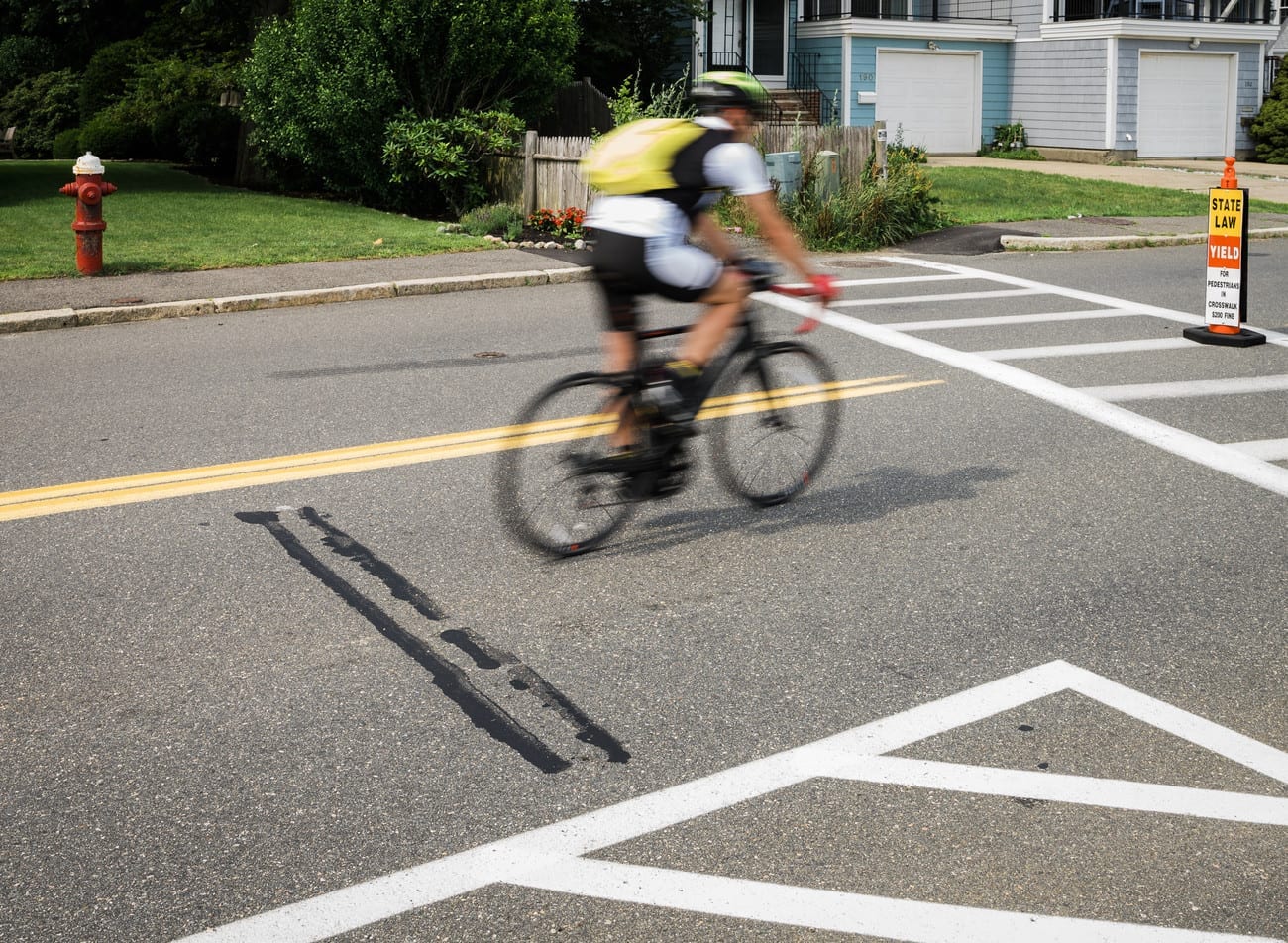SWAMPSCOTT — A set of speed bumps installed on Puritan Road last month lasted only two days before they were removed due to safety concerns.
The two temporary speed bumps, which were installed June 24 on either side of the crosswalk at the entrance to Eisman’s Beach, were the cause of two bicycle accidents before their removal on June 26.
“I accept the hazards of the road, like potholes, this and that,” said Neil Callahan of Nahant, one of the cyclists injured after hitting the bump. “They put that down on the road and I never saw it.”
While the bumps were painted yellow for visibility, no signage was installed notifying drivers or cyclists of their existence.
While Callahan walked away from his June 25 injury with mere scrapes and bruises, the other cyclist wasn’t so lucky. The morning of June 26, a 54-year-old Marblehead man was sent to Massachusetts General Hospital with a head injury after hitting the bump at a high speed. The bumps were removed later that day.
Department of Public Works Director Gino Cresta said he felt terrible that the speed bumps caused injury to anyone.
“We thought what we did was right,” Cresta said, adding that they had included four and a half feet between the bumps and the sidewalk for bikers to go around them. “Apparently, that might not have been good enough.”
Cresta explained that the town has received consistent complaints since 2017 about cars speeding on Puritan Road. Between 2018 and 2020, the town installed crosswalk signage, a flashing speed board, barriers and street striping to draw attention to the crosswalk at Eisman’s Beach, but vehicles have continued to speed down the road.
Puritan Road resident Joe Ippolito, himself an avid cyclist, said that he first noticed the speed bumps while driving on June 25, and messaged his cycling buddies to warn them of the hazard. Coincidentally, he said that that very day he was driving home from work when he witnessed Callahan’s accident.
“They were placed in a way it would be tough for cyclists to get through,” Ippolito said. “There were cones on the road next to the curb. It didn’t give a lot of room. You’d almost have to slow down really slow.”
Over the past few years, Swampscott has been trying to improve pedestrian safety in town. In 2019, the town revamped its Traffic Study Advisory Committee to address road safety issues, and Town Administrator Sean Fitzgerald has repeatedly stressed the importance of making improvements, including requesting a $100,000 capital fund for the purpose.
“It is incredibly disconcerting that we had a couple of accidents, and this just highlights the importance of being mindful of how we approach pedestrian safety investments in Swampscott,” Fitzgerald said. “Our roads are used by pedestrians, bicyclists and automobiles … For generations we have failed to invest in pedestrian safety, and we’re going to double down to ensure that pedestrians and bicyclists are safe.”
In a Select Board meeting last week, board Chair Peter Spellios said that the town needs to do a better job of taking initiative to address safety issues. He said that in the time since the Traffic Study Advisory Committee was overhauled, he had hoped to see more done.
“Something is being missed right now, and it’s on us,” Spellios said. “I don’t believe the town is safer two years later for pedestrians than it was, and I think that has to change.”
On Puritan Road, Cresta said that while the speed bumps have been removed, the DPW is continuing to look at ways to improve safety and slow down traffic on the street.
Neighbors say that change is definitely needed. On a post in the Swampscott Nest Facebook group from June 25, commenters praised the DPW for installing the speed bumps, and called out for similar changes to be made in other parts of town.
“Pretty bad (that) people can’t drive the correct way and there needs to be speed bumps installed at all,” one commenter wrote.
Ippolito said he hopes the speed bumps stay gone, but he sees a fairly obvious solution to the problem.
“If they want to reduce cars’ speed, they should start by reducing the speed limit,” he said. “It’s not a 30 mile-per-hour road. We live there; I couldn’t go 30 if I wanted to.”

